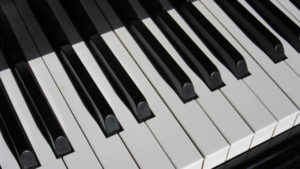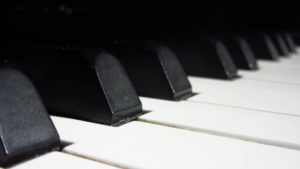Notation
 System of Notation by Letters.—The earliest system of Notation, attributed to Boethius, the Roman philosopher, seems to have been the placing of letters over the syllables.
System of Notation by Letters.—The earliest system of Notation, attributed to Boethius, the Roman philosopher, seems to have been the placing of letters over the syllables.
During the period of history dominated by Pope Gregory the Great, a change was made in this system by which capital letters, small letters and double letters were used, an improvement, since only the first seven letters of the alphabet were employed.
This system seems to have been used chiefly for theoretic demonstration. These two methods indicated the pitch sufficiently, but not the duration of the sounds.
Neumes.—The next attempt was somewhat of a retrogression instead of an improvement. Signs called Neumes were placed over the words. These signs consisted of points, lines, accents, hooks, curves, angles and a number of other characters placed more or less exactly over the syllables to which they were intended to be sung, in such manner as to show, relatively, by the distance above the text, how much the voice was to rise or fall. They did not indicate duration, absolute pitch or The number of characters in use, according to manuscripts still preserved, varied from seven to forty. In later forms they appear in the notation used for the old Plain Song melodies (Gregorian) which were recalled into general use by Pope Pius X, in 1904.
Parallel Lines.—Another plan was to use a variable number of lines, writing the syllables in the spaces.
This clumsy contrivance indicated relative pitch well enough, but not the key—or the duration. The next step was to use lines—which varied in number—upon or between which the Neumes, which gradually changed to square notes, were written. The pitch was indicated by using a red line for F, and a yellow or green line for C. A further improvement was, to put the letters F or C and later G on one of the lines at the beginning; the modern clefs are simply modifications of these letters.
 Characters to Indicate Duration.—The honor of suggesting characters to indicate duration is usually attributed to Franco of Cologne, an ecclesiastic who lived in the latter part of the 12th century; but as in the case of Gregory and Guido, we must believe that his name simply stands as representative of a period. A system is rarely the work of one man, rather a development from the labor of many. Franco’s treatise on the subject marked an epoch. Up to the end of the 13th century the notes in use were the Longa, Brevis, and Semibrevis, as well as the Duplex Longa, or Maxima. The smaller values, the Minima, and the Semiminima first occur about 1300. About the middle of the 15th century white notes were introduced in place of certain of the black, the latter color being reserved only for the smaller note values. The signs underwent some change at this time. Maxima, Longa, Brevis, Semibrevis (our whole note), Minima (half note), Semiminima (quarter), Fusa (eighth), Semifusa (sixteenth).
Characters to Indicate Duration.—The honor of suggesting characters to indicate duration is usually attributed to Franco of Cologne, an ecclesiastic who lived in the latter part of the 12th century; but as in the case of Gregory and Guido, we must believe that his name simply stands as representative of a period. A system is rarely the work of one man, rather a development from the labor of many. Franco’s treatise on the subject marked an epoch. Up to the end of the 13th century the notes in use were the Longa, Brevis, and Semibrevis, as well as the Duplex Longa, or Maxima. The smaller values, the Minima, and the Semiminima first occur about 1300. About the middle of the 15th century white notes were introduced in place of certain of the black, the latter color being reserved only for the smaller note values. The signs underwent some change at this time. Maxima, Longa, Brevis, Semibrevis (our whole note), Minima (half note), Semiminima (quarter), Fusa (eighth), Semifusa (sixteenth).
The Beginnings of Harmony.—Our information as to the beginning of Harmony is very vague and uncertain. As early as the Saxon times in England some rude kind of part singing, without written rules apparently, seems to have existed. The first intimations we have of any scientific attempts are Faburden or Falsoborden and Diaphony or Organum. Faburden consisted of singing a melody while another voice sang a drone accompaniment below it.
Diaphony or Organum consisted of a succession of fourths or fifths and octaves.
It has been denied by some authorities that such a barbarous manner of singing ever existed; but two considerations have been lost sight of, in making this denial: First, the fourth, fifth and octave were esteemed the only consonances. Secondly, the undisputed fact that as late as the time of Chaucer, if not later, what was called “discanting quatible” or “quinable” existed; this discanting was done as follows: The performer while singing a melody accompanied himself on the lute, playing the same melody a fourth or fifth above. It can hardly be doubted that a style of performance that was esteemed in the 15th, was perfectly satisfactory to the ears of the 10th century.